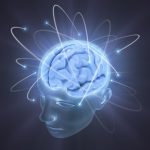Is preserving a person’s connectome sufficient to preserve a person’s mind?
Current evidence suggests that it is. Because it appears that the human mind survives cessation of all electrical activity in the brain, it is clear that it is only a physical arrangement of special cells and molecules in the brain that is necessary to preserve the mind.
While preserving the brain’s connectome does not preserve the exact positions of every molecule in the brain, it is very likely that this is not important for the preservation of memories and mind. Much of the molecular activity in our brains is there to preserve the life of cells, not to hold high level information about the outside world. Only a special subset of neural activities, specifically the neural connections (synapses) and some molecular stores inside each neuron that modulate how the neuron talks to other neurons, appear to be involved in storing our unique thoughts, emotions, memories, experiences, self-awareness systems, and personality. Those connections are surprisingly redundant and fault-tolerant, which allows us to retain and rebuild our mental abilities throughout our lives, even as many of our neural connections suffer damage from aging, biochemical changes, and disease.
Recently, researchers have begun to determine what sorts of computations are taking place in neural tissue. Each time they have succeeded, they were able to replicate the behavior of the neural tissue with relatively simple computer models involving only the synaptic connections between neurons. These successes in a field called computational neuroscience tell us two things: First, they demonstrate that our thoughts and memories are stored as special patterns that have predictable causal relationships in the physical world. They are not dependent on the type of matter (computer hardware or biological matter). This is called the patternism hypothesis. Second, they help to put an upper limit on the complexity of brain systems involved in memory and mind, because if there was much more going on than what we simulate in our models, we would not be able to replicate behavior so well.
Have a look at the following articles and papers to get a feel for the requirements for simulating our unique neural computational processes, including our memories, personality, and identity:
- Article: Does Personal Identity Survive Cryopreservation?, Mike Darwin, 2011
- Article: Preserving the Self for Later Emulation: What Brain Features Do We Need?, John Smart, 2012
- Paper: Is the Brain a Quantum Computer? No. (PDF), Abninder Litt et.al., Cognitive Science, 2006
- Paper: Electron Imaging Tech For Whole Brain Neural Circuit Mapping (PDF), Ken Hayworth, 2012






